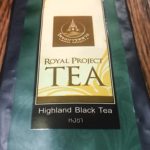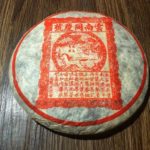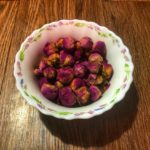Thai Butterfly Pea Tea – Nootropic Blue Tea
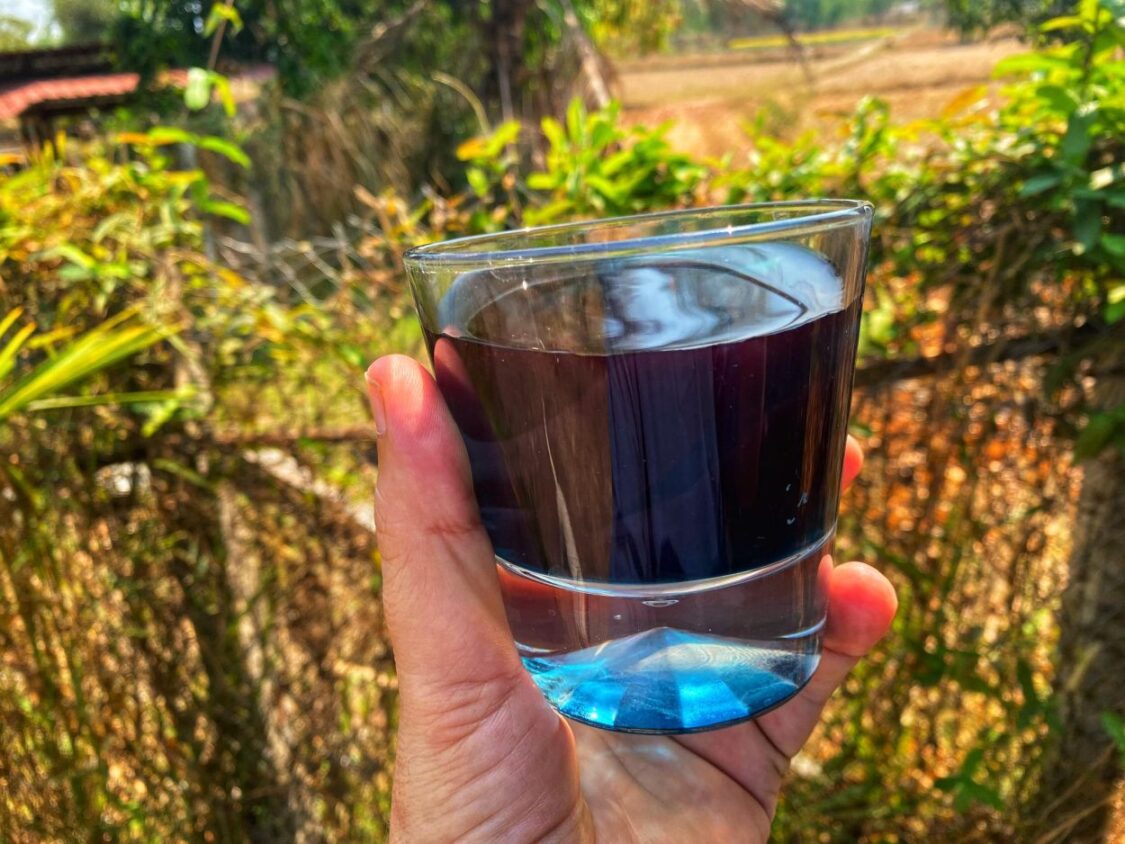
For centuries, Thai Butterfly Pea Tea (also known as Blue Tea) has been treasured in Thai culture as a delicious nootropic with potent healing properties. Known as “Cha Anchan” (ชาอัญชัน) in Thai, this vibrant brew is sourced from the petals of the Clitoria ternatea flower, which gives it its distinctive blue hue — and yes, the scientific name was inspired by what you were wondering. 😄
This delicious tea holds a special place in Thai traditions, often used in religious ceremonies and as a symbol of hospitality. Its popularity has spread beyond Thailand, captivating tea enthusiasts around the world with its unique flavor and health benefits.
The Science Behind Butterfly Pea Tea’s Vibrant Blue Color
The striking blue color of Thai Butterfly Pea Tea is not just visually appealing, but it also holds scientific significance. The flowers of the Clitoria ternatea plant contain a natural pigment called anthocyanin, which is responsible for the tea’s intense blue hue. Anthocyanins are powerful antioxidants that have been shown to have numerous health benefits, including reducing inflammation and protecting against chronic diseases.
The vibrant color of Thai Butterfly Pea Tea is a visual reminder of the tea’s antioxidant-rich composition. The blue flowers also have been used for centuries to make pigment for dying — similar in color to the famous Indigo dyes of Sakon Nakhon in Northeast Thailand.
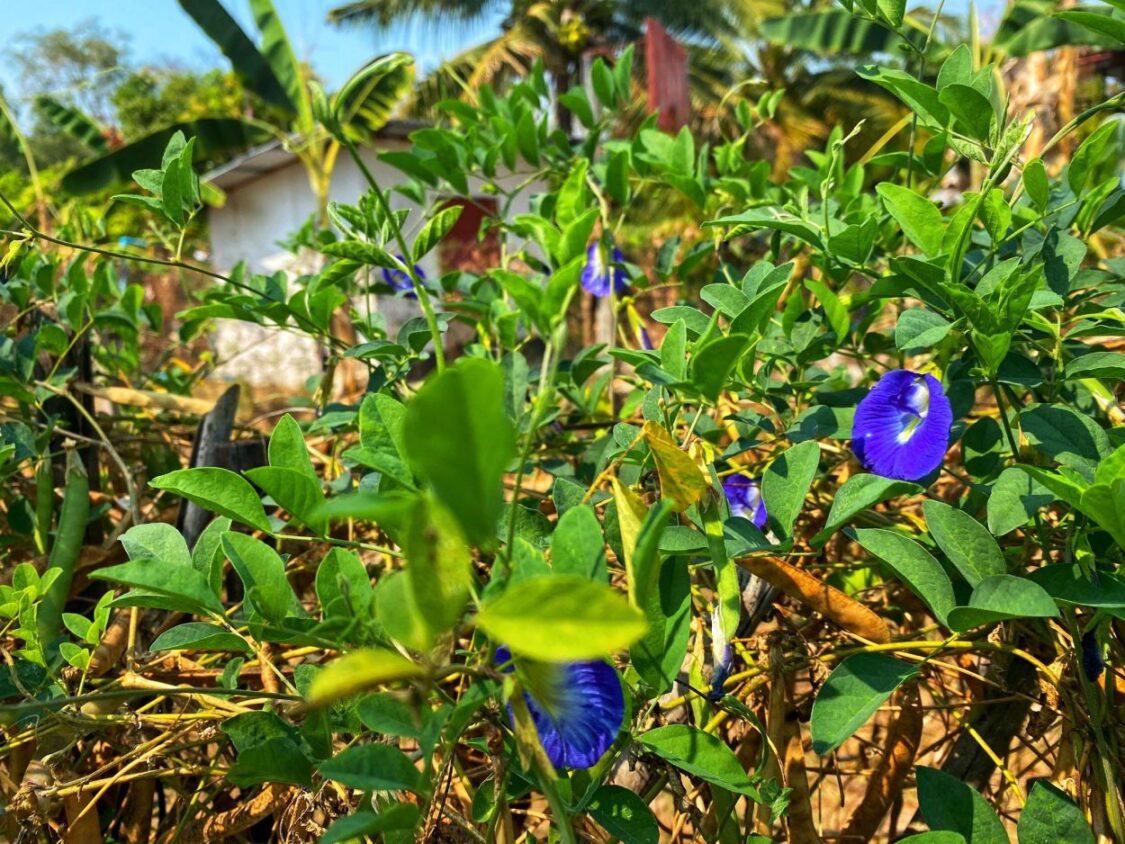
Health benefits of Thai Butterfly Pea (Blue) Tea
Antioxidants: Thai Butterfly Pea Tea is a powerhouse of antioxidants, which play a crucial role in protecting the body against free radicals. Free radicals are unstable molecules that can cause damage to cells and contribute to the development of various diseases.
The antioxidants in Thai Blue Tea help neutralize these harmful molecules, reducing the risk of oxidative stress and promoting overall health and well-being.
Nootropic: One of the most remarkable health benefits of Thai Butterfly Pea Tea is its potential to improve cognitive function and support brain health. In addition to anthocyanins, the tea contains flavonoids, both of which have been shown to enhance memory, recall, and cognition. Research suggests that these compounds may help protect brain cells from damage and improve communication between neural pathways.
Incorporating Thai Blue Tea into your daily routine may provide a natural boost to your brain health. Indeed, many Thais have traditionally drank this tea as a nootropic beverage.
Digestive Health: Butterfly Pea Tea has long been used in Thailand as a traditional remedy for digestive issues. The tea’s natural compounds are believed to have a soothing effect on the digestive system, helping to alleviate bloating, indigestion, and other gastrointestinal discomforts.
Meanwhile, the tea’s anti-inflammatory properties can help reduce inflammation in the gut, promoting a healthy digestive environment and supporting overall digestive wellness.
Weight Loss: For those on a weight loss journey, Thai Butterfly Pea Tea can be a valuable addition to their routine. The tea is naturally low in calories and sugar, making it a healthier alternative to sugary beverages.
Additionally, its ability to promote a healthy metabolism can aid in weight management. The tea’s antioxidants may also help reduce inflammation, which can be a contributing factor to weight gain. By incorporating Thai Blue Tea into your diet, you can support your weight loss efforts and enjoy a delicious and refreshing beverage at the same time.
Boosting Immunity: Butterfly Pea Tea is an excellent natural immunity booster. Its high antioxidant content helps strengthen the immune system and protect the body against infections and diseases. The tea’s anti-inflammatory properties also play a crucial role in supporting overall health.
Chronic inflammation has been linked to various health issues, including heart disease, diabetes, and certain types of cancer. By regularly drinking Thai Blue Tea, you can help reduce inflammation in your body and promote a healthier immune system.
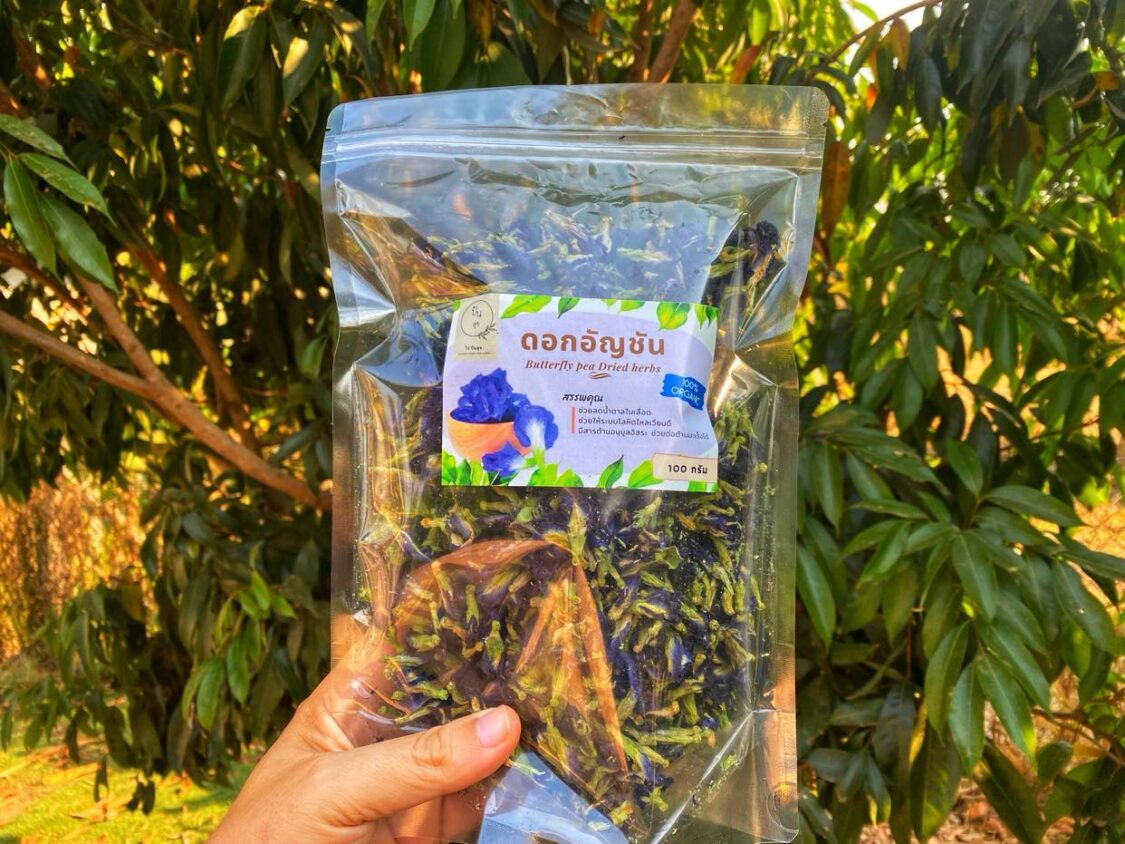
How to Make Thai Butterfly Pea Tea
Thai Butterfly Pea Tea is easy to make, and delicious both hot and cold. The tea can be prepared by steeping the dried flowers in hot water for a few minutes, allowing the vibrant blue color to infuse into the water. You can enjoy the tea as is or add a squeeze of lemon or lime to enhance the flavor and further boost the tea’s antioxidant properties.
Thai Blue Tea recipes will also include honey as an ingredient (along with lemon or lime) and additional herbs such as lemongrass, ginger, or mint. However, Pandan leaves (or powder) are probably the most popular added ingredient. These are steeped along with the flowers and provide the additional health benefits of regulating blood sugar levels and lowering blood pressure.
The colorful tea also can be used as a natural food coloring, adding a touch of blue to various dishes and beverages. Thais are often creative and explore the many different ways of incorporating this blue tea into their culinary creations.
Here is our favorite Butterfly Pea Tea recipe for iced tea in Sakon Nakhon.
INGREDIENTS
1. 32 Butterfly Pea Flowers
2. 2 Liters Water
3. 3 tablespoons honey
4. 2 Lime
5. 2 Tablespoons Pandan Leaf Powder
PREPARATION
1. Heat filtered water until boiling, add Pandan powder, Butterfly Pea flowers (dried or fresh), and stir. Turn off burner and allow to steep for 5 minutes. Filter the water and discard the pulp.
2. Add the honey and lime, and stir until dissolved. Strain through cheesecloth if you have it (but not necessary if you don’t).
3. Put the Butterfly Pea Tea into a container to cool off, and then place in the refrigerator until completely cool.
Butterfly Pea Tea also is sometimes mixed with Kratom Tea in Thailand (1 part Butterfly to 4 parts Kratom) to create a rejuvenating elixir that also soothes the nerves.
Does Butterfly Pea Tea contain caffeine? No, Thai Blue Tea does not contain caffeine, so it is safe to drink before going to bed. When drinking the tea before bed, it will often cause you to have more vivid and memorable dreams (which demonstrates its nootropic, brain boosting, properties).
Buying Butterfly Pea Flowers in Thailand to make the blue tea is very cheap. A 100 gram bag of dried flowers (which is enough for over a month of daily drinking) is only 60-80 baht. At a Sakon Nakhon coffeehouse, the price of a cup is usually about 30 baht (less than $1). The flowers are also quite easy to grow, and appear on a fast-growing vine.
So, for those looking for a delicious Thai nootropic beverage that also supports weight loss, boosts immunity, and fights inflammation, we highly recommend Butterfly Pea Tea. If you are interested in other Thai teas, be sure to read our post on Oolong Highland Black Tea, which we have rated as one of the best teas in Thailand.
- Affirmations in Buddhism & Thailand - June 7, 2025
- Speak Thai Naturally Without the Gymnastics - April 20, 2025
- The Best Learn Thai Podcast and YouTube Channel - April 10, 2025

